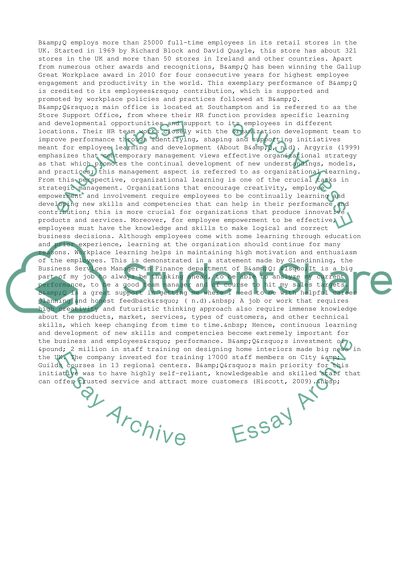Cite this document
(“Organisations Learning and Development Essay Example | Topics and Well Written Essays - 2000 words”, n.d.)
Retrieved from https://studentshare.org/business/1430637-organisations-learning-and-development-yt
Retrieved from https://studentshare.org/business/1430637-organisations-learning-and-development-yt
(Organisations Learning and Development Essay Example | Topics and Well Written Essays - 2000 Words)
https://studentshare.org/business/1430637-organisations-learning-and-development-yt.
https://studentshare.org/business/1430637-organisations-learning-and-development-yt.
“Organisations Learning and Development Essay Example | Topics and Well Written Essays - 2000 Words”, n.d. https://studentshare.org/business/1430637-organisations-learning-and-development-yt.


